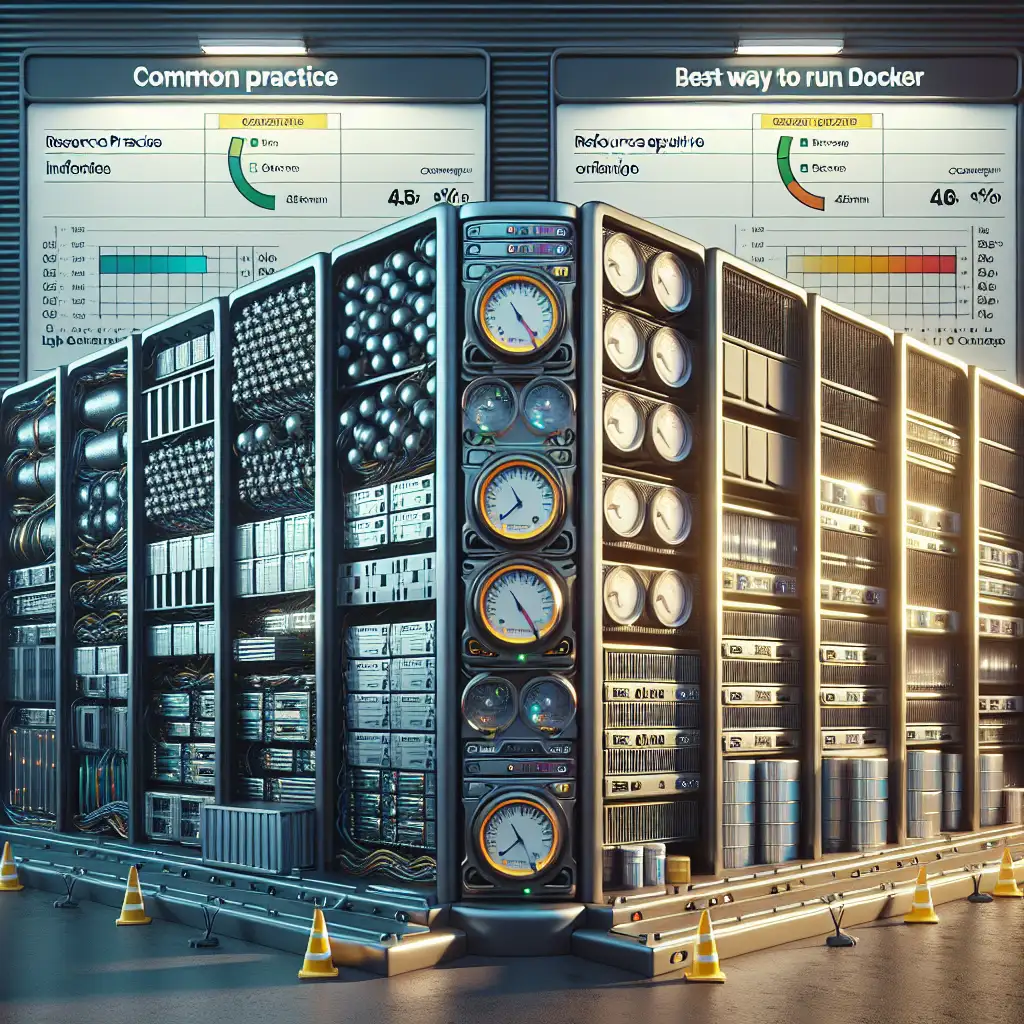Optimizing Container Performance: The Best Way to Run Docker with Minimal Overhead
Containers promise lightweight isolation, but inefficiency surfaces fast at scale. Bloated images, misallocated resources, careless build strategies—these can easily add seconds to deploys, inflate storage costs, and snarl CI/CD pipelines.
Fundamental question: what actually slows down your containers? And which optimizations matter most when moving from laptop dev to a real-world Kubernetes cluster with production traffic?
Small Base Images: Alpine, Distroless, or Custom
A typical Node.js image (node:18) weighs in at more than 400 MB. Do you actually need bash, coreutils, legacy locales? Often not.
Switching to Alpine (node:18-alpine) or, for static binaries, a Google-distroless image instantly slashes image size. For Python:
FROM python:3.11-alpine
RUN apk add --no-cache libpq
WORKDIR /app
COPY requirements.txt .
RUN pip install --no-cache-dir -r requirements.txt
COPY . .
CMD ["python", "main.py"]
- Small images deploy faster in CI and to remote runtimes.
- Fewer OS packages = smaller attack surface.
- Note: Alpine's musl libc has compatibility quirks—cryptography and pandas often break. Use
python:3.11-slimif native modules are a must.
Dockerfile Layering for Caching and Final Size
Smart layering means efficient rebuilds. Get this wrong and CI builds every line, every run.
Principle: Dependencies installed before source code, build artifacts cleaned before runtime. Example for Node.js:
FROM node:20-alpine AS base
WORKDIR /srv
COPY package*.json ./
RUN npm ci --omit=dev
FROM base as runtime
COPY . .
CMD ["node", "server.js"]
Gotcha:
COPY . .afternpm ciinvalidates the cache if any file changes. Consider.dockerignoreaggressively:node_modules *.log .git
For C/C++ or Rust, multistage builds are essential to avoid leaving toolchains in the runtime container.
Resource Limits: Not Optional in Real Deployments
Bare Docker on a developer laptop defaults each container to host limits. Bump the wrong container or hit a fork bomb and the kernel OOM killer selects a victim—randomly.
Always set --memory and --cpus explicitly unless you want unpredictable app deaths.
docker run --cpus=1 --memory=512m myapp:latest
Kubernetes: resource requests/limits are the equivalent. Watch for subtle behaviors—containerd may appear fine on docker stats but still throttle under load.
Linux Hosts Outperform OS X/Windows: Nested Virtualization Penalties
Running Docker natively on Linux (kernel 5.x+) has near-native performance. Windows and Mac route containers through a VM layer (Hyper-V, QEMU, or HyperKit), costing >2x CPU and filesystem I/O overhead.
If you require reproducible or production-like testing, spin up a thin Ubuntu LTS VM in the cloud (try GCP e2-micro, AWS t3.small). Don’t trust MacBook dev for pre-production load numbers.
File Mounts: Performance Impact of Bind Mounts vs Volumes
Bind mounting is convenient (-v $(pwd):/app), but the overlay between an OS X host FS and Docker’s union FS performs poorly under heavy file churn or inodes >100k (think large Next.js builds). Symptoms: build times triple, inode warnings in logs, or ECANCELED errors.
Production: Copy static files at image build time. Persist runtime data in named volumes (managed by Docker) instead:
docker volume create postgres_data
docker run -v postgres_data:/var/lib/postgresql/data postgres:15.3-alpine
Trade-off: debugging is harder when files aren’t accessible on the host—but stability and speed justify it.
Logging: Don’t Let Container Logs Fill Disks
By default, json-file log driver on Docker grows until disk full. On busy hosts, containers crash with “No space left on device”.
Set sane log rotation for all services:
docker run --log-driver=json-file \
--log-opt max-size=20m \
--log-opt max-file=4 myapp:latest
Or, offload logs with syslog/Fluentd/Filebeat. Some organizations use sidecar containers to siphon logs for audit compliance.
Multi-Stage Builds Cut Dead Weight
Modern apps often need build tools or compilers (npm, pip, go build). Leaving them in the final image is wasteful and risky.
Separate build-time from runtime in your Dockerfile:
# Build React app
FROM node:20-alpine AS build
WORKDIR /app
COPY package*.json ./
RUN npm ci
COPY . .
RUN npm run build
# Deploy built assets only
FROM nginx:1.25-alpine
COPY --from=build /app/dist /usr/share/nginx/html
Image goes from 800 MB (with all node_modules) to <30 MB.
Tune the Runtime: Seccomp, cgroups, and Prioritization
Default Docker seccomp is strict but not always ideal. For certain workloads (e.g., system-level monitoring agents), seccomp or AppArmor tweaks are required to avoid:
Operation not permitted (errno 1)
Side note: for CI, avoid --privileged when you can. Instead, craft a minimal seccomp override policy.
Kubernetes: consider defining pod QoS=Guaranteed to enforce resource guarantees. Preemptable or burstable pods risk higher eviction rates during host strain.
Quick Reference
| Action | Primary Benefit | Gotcha/Detail |
|---|---|---|
| Alpine/distroless/cut base | Faster pulls, smaller images | musl libc ≠ glibc |
| Layering, caching in Dockerfile | Faster, reproducible builds | Dockerfile ordering |
Resource limits (--cpus, --memory) | Prevents OOMs, fair scheduling | Doesn’t auto-scale |
| Linux-native hosts | Best fs, net, and CPU perf | Mac/Win = slow |
| Minimize bind mounts in prod | Speed, isolation | Debugging is trickier |
| Log rotation or shipping | Prevents disk fill, audit trail | Missed log lines possible |
| Multistage builds | No toolchains in prod images | Extra build complexity |
| Seccomp/cgroups/pod QoS | Finely-tuned security/perf | Complex to debug |
Non-Obvious Tips
-
Even with
alpine, always check CVE lists (trivy image <img>). -
Build ARGs can sneak secrets into images—never pass secrets at build time.
-
docker system prune --volumescan trash data if run on the wrong host; safeguard critical named volumes with automation. -
Docker image reproducibility isn’t perfect—tags drift. Pin SHA digests for stable builds:
FROM python@sha256:<hash>
The difference between “it works” and “it scales” comes down to these practices. After a few production incidents, the shortcuts become scars. New platforms emerge, but these container fundamentals stay relevant.
If you need a specialized example—multi-arch builds, GPU containers, or integrating custom monitoring via sidecar—review the Docker documentation, then prototype; edge cases mean documentation alone is rarely enough.
Authored by a DevOps engineer with a background in containerizing microservices for highly regulated environments. For feedback or scenario-specific examples, connect via the comments or reach out directly.
